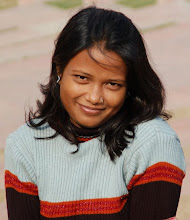


By : Monis and Jaishree
Nandini, 30, is a hijra involved in prostitution. She ekes out her living by offering sexual services. Her clients range from students to highly paid professionals. But Nandini has HIV/AIDS.
And she is not alone.
Of the total population of 40,000 hijras in Delhi around 80 percent of them are HIV infected, according to figures maintained by the World Bank Group Chronicle. [link] India is home to around one million transgenders. In contrast, the statistics at the National AIDS Control Organization (NACO) suggest that only about 50 percent of the hirjas are HIV infected.
The plight of virus infected hijras demands societal acceptance but categorized as the third gender, they face social alienation and discrimination.
In the Seelampur area of Delhi, Saira, a 25-year-old hijra complains that the government is not doing anything. “If we are HIV infected we can’t go to hospitals. It comes along as a taboo burden as doctors refuse to treat us.”
Yousef, a hijra now on her deathbed, complains of having faced discrimination in the Guru Tegh Bahadur hospital in East Delhi. The hospital authorities however deny the accusation.
The police through frequent arrests of hijras make them more vulnerable. The Indian Penal Code 377 makes life difficult for the hijras. Commonly known as the ‘Anti sodomy law’, the law criminalizes same sex sexual behaviour irrespective of the consent of the people involved.
While organizations like Naz foundation and Hum Safar Trust are working to revoke the law, Development Advocacy and Research Trust (DART) is an organization working for the betterment of HIV infected hijras in Seelampur. Headed and run by Laxmi Narayan Tripathi, a hijra and a celebrated transgender activist, DART is working in bringing out hijras as equal stakeholders, making them aware of their rights and spreading awareness about condom use.
Anjali Gopalan, Executive Director of Naz foundation on their website asserts that “the state is not doing enough” for the sexual minority.
However, the government in March this year tried to bring in hijras into the government policy for the first time in a breakthrough drug de-addiction programme. NACO has also opened a special cell for sexual minorities.
Mandikini, a hijra, is meanwhile waiting to see if the appalling conditions of HIV infected from her community will be better dealt with.” She expects government to work for their svasthya adhikar(health rights) and her community’s integration into the society.
And she is not alone.
Of the total population of 40,000 hijras in Delhi around 80 percent of them are HIV infected, according to figures maintained by the World Bank Group Chronicle. [link] India is home to around one million transgenders. In contrast, the statistics at the National AIDS Control Organization (NACO) suggest that only about 50 percent of the hirjas are HIV infected.
The plight of virus infected hijras demands societal acceptance but categorized as the third gender, they face social alienation and discrimination.
In the Seelampur area of Delhi, Saira, a 25-year-old hijra complains that the government is not doing anything. “If we are HIV infected we can’t go to hospitals. It comes along as a taboo burden as doctors refuse to treat us.”
Yousef, a hijra now on her deathbed, complains of having faced discrimination in the Guru Tegh Bahadur hospital in East Delhi. The hospital authorities however deny the accusation.
The police through frequent arrests of hijras make them more vulnerable. The Indian Penal Code 377 makes life difficult for the hijras. Commonly known as the ‘Anti sodomy law’, the law criminalizes same sex sexual behaviour irrespective of the consent of the people involved.
While organizations like Naz foundation and Hum Safar Trust are working to revoke the law, Development Advocacy and Research Trust (DART) is an organization working for the betterment of HIV infected hijras in Seelampur. Headed and run by Laxmi Narayan Tripathi, a hijra and a celebrated transgender activist, DART is working in bringing out hijras as equal stakeholders, making them aware of their rights and spreading awareness about condom use.
Anjali Gopalan, Executive Director of Naz foundation on their website asserts that “the state is not doing enough” for the sexual minority.
However, the government in March this year tried to bring in hijras into the government policy for the first time in a breakthrough drug de-addiction programme. NACO has also opened a special cell for sexual minorities.
Mandikini, a hijra, is meanwhile waiting to see if the appalling conditions of HIV infected from her community will be better dealt with.” She expects government to work for their svasthya adhikar(health rights) and her community’s integration into the society.





0 comments:
Post a Comment